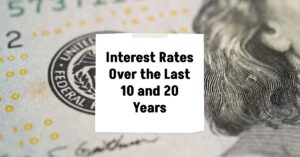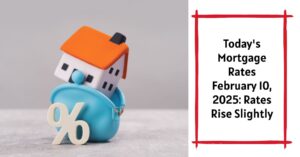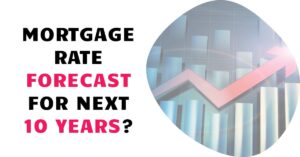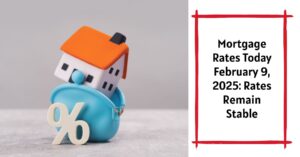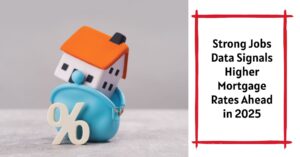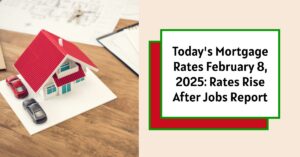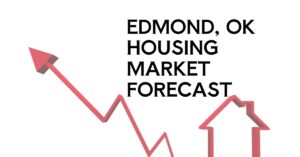If you are interested in how the Federal Reserve sets and changes the interest rate that affects the economy, you might want to look at the trends of the federal funds rate over the last 20 years. The federal funds rate is the interest rate at which banks lend their excess reserves to each other overnight.
The Fed influences this rate by buying and selling government securities in the open market, which affects the supply and demand of reserves. The Fed also sets a target range for the federal funds rate, which signals its desired level of monetary policy.
The federal funds rate has gone through several cycles of increases and decreases over the past two decades, reflecting the Fed's response to different economic conditions and inflation pressures.
Interest Rates Over the Last 20 Years
Here is a brief overview of the main phases of the interest rates history over the last 20 years, i.e.; since 2003.
2003-2004:
The Fed kept the federal funds rate at a record low of 1% for a year, as the economy recovered from the 2001 recession and the aftermath of the 9/11 attacks. The Fed started to raise the rate gradually in June 2004, as inflation and growth picked up.
2004-2006:
The Fed continued to raise the federal funds rate by 0.25 percentage points at every meeting, reaching a peak of 5.25% in June 2006. The Fed wanted to prevent the economy from overheating and contain inflation expectations, as the housing market boomed and oil prices rose.
2006-2008:
The Fed kept the federal funds rate steady at 5.25% for more than a year, as the economy slowed down and inflation moderated. The Fed began to cut the rate aggressively in September 2007, as the subprime mortgage crisis erupted and threatened to trigger a financial meltdown.
The Fed lowered the rate by a total of 5 percentage points in 10 months, reaching a range of 0-0.25% in December 2008. This was the lowest level ever and marked the beginning of the zero interest rate policy (ZIRP).
2008-2015:
The Fed maintained the federal funds rate at near zero for seven years, as the economy faced the worst recession since the Great Depression and a slow recovery. The Fed also implemented several unconventional monetary policy tools, such as quantitative easing (QE) and forward guidance, to provide additional stimulus and support to the financial markets.
2015-2018:
The Fed started to normalize its monetary policy in December 2015, after more than six years of ZIRP. The Fed raised the federal funds rate by 0.25 percentage points for the first time since 2006, signaling confidence in the economic outlook and progress toward its inflation and employment goals.
The Fed continued to raise the rate gradually over the next three years, reaching a range of 2.25-2.5% in December 2018. The Fed also began to reduce its balance sheet in October 2017, by allowing some of its holdings of government securities and mortgage-backed securities to mature without reinvesting them.
2018-2020:
The Fed paused its rate hikes in 2019, as the economy faced headwinds from trade tensions, global slowdown, and geopolitical uncertainties. The Fed also announced that it would end its balance sheet reduction in September 2019, earlier than expected.
The Fed cut the federal funds rate three times in 2019, by a total of 0.75 percentage points, to provide insurance against downside risks and support growth and inflation.
The Fed kept the rate unchanged at a range of 1.5-1.75% until March 2020, when it slashed it to near zero again in response to the coronavirus pandemic and its devastating impact on the economy and financial markets. The Fed also resumed its QE program and launched several emergency lending facilities to provide liquidity and credit to various sectors of the economy.
2020-2023:
The Fed has kept the federal funds rate at a range of 0-0.25% since March 2020, as the economy has experienced a sharp contraction followed by a partial recovery amid ongoing health and social challenges. The Fed has also expanded its QE program and extended its lending facilities to support market functioning and economic activity.
In August 2020, the Fed announced a new framework for conducting monetary policy, which emphasizes that it will seek to achieve inflation that averages 2% over time and that it will not raise rates preemptively based on forecasts of inflation or unemployment.
In September 2023, after more than two years of near-zero rates, strong economic growth, and rising inflation pressures, the Fed announced that it would start to taper its QE program in November 2023 and that it expected to begin raising rates in mid-2024, according to its median projection.
2023-2025:
In early 2024, the Federal Reserve held the federal funds rate steady in the range of 4.25% to 4.5%, reflecting its cautious approach amid stabilizing economic conditions. By September 2024, the Fed lowered the rate by 0.5 percentage points to a target range of 4.75% to 5%, responding to moderating inflation and softening demand.
In December 2024, the Fed further cut the interest rate by 25 basis points, bringing it down to a range of 4.25% to 4.5%. This adjustment aimed to support ongoing economic growth while inflation showed signs of a downward trend. Overall, 2024 was characterized by a delicate balancing act, as the Fed navigated economic fluctuations driven by inflation dynamics and labor market stability.
In early 2025, specifically at the January meeting, the Federal Reserve maintained the federal funds rate at a range of 4.25%-4.5%. This decision came after a period of aggressive rate hikes aimed at combating inflation, as the economy stabilized. It reflects a shift in policy as the Fed adapts to strengthening economic conditions, with projections indicating potential further cuts in response to any weakening economic circumstances. The Fed's rate-setting trajectory remains highly data-dependent, signaling flexibility based on evolving economic indicators.
The trends of the federal funds rate over the last 20 years show how the Fed has adapted its monetary policy to changing economic circumstances and inflation dynamics.
The Fed's actions have had significant implications for consumers, businesses, and investors, affecting borrowing costs, saving returns, and asset prices. Understanding the Fed's policy decisions and expectations can help you make better financial decisions and plan for the future.
